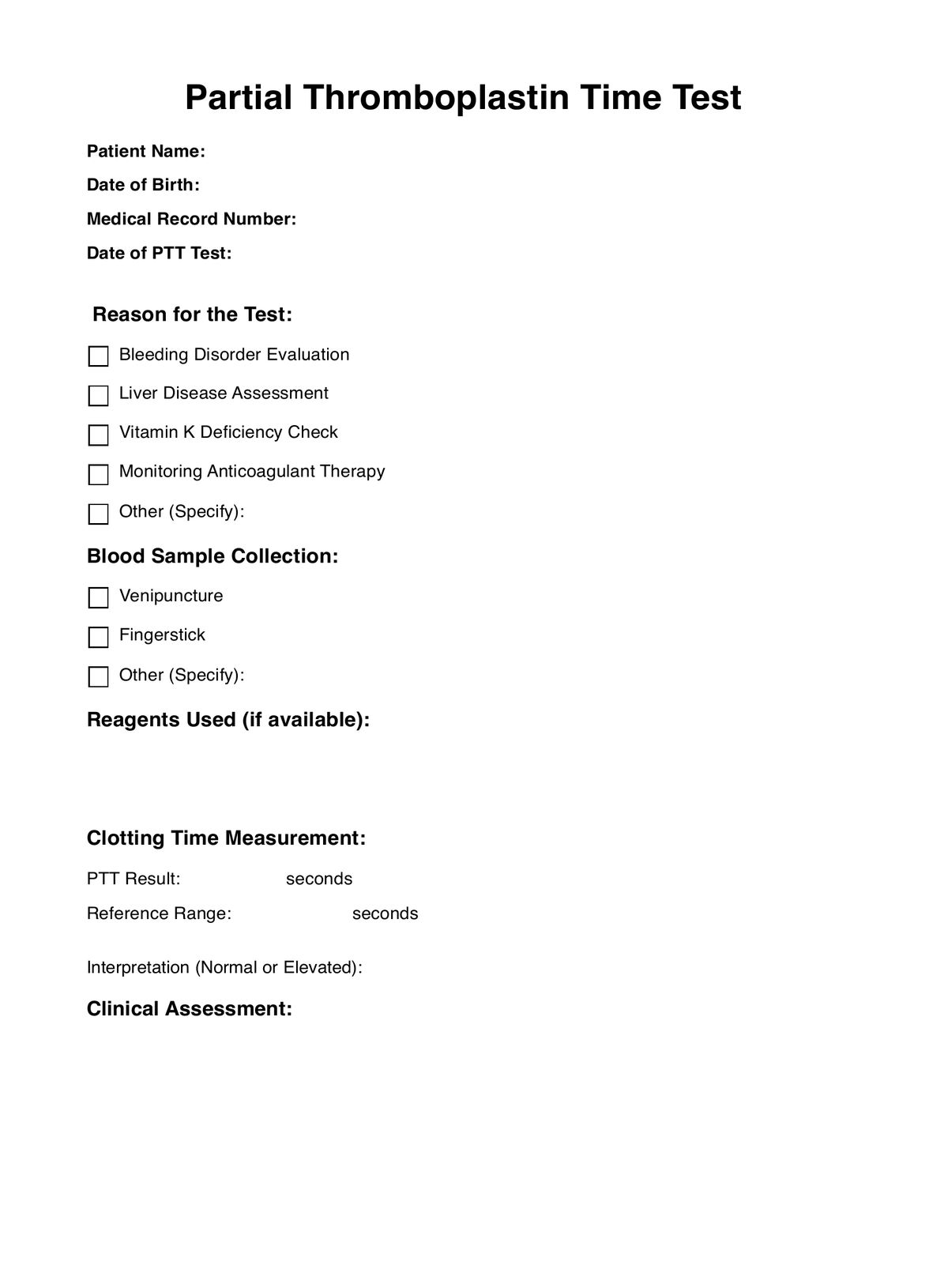They are typically requested by doctors concerned about a patient's bleeding or clotting function. This may include doctors who specialize in hematology, cardiology, and internal medicine.

Partial Thromboplastin Time Test
Learn about the Partial Thromboplastin Time Test to assess blood clotting. Understand how it works, its clinical significance, and what to expect.
Use Template
Partial Thromboplastin Time Test Template
Commonly asked questions
It helps monitor various conditions, including bleeding disorders like hemophilia and von Willebrand disease, assess liver disease and detect vitamin K deficiency.
A small blood sample is drawn from a vein in the arm to perform a PTT test. The blood sample is then placed in a tube with a particular reagent. The time it takes for the blood to clot is then measured.
EHR and practice management software
Get started for free
*No credit card required
Free
$0/usd
Unlimited clients
Telehealth
1GB of storage
Client portal text
Automated billing and online payments











